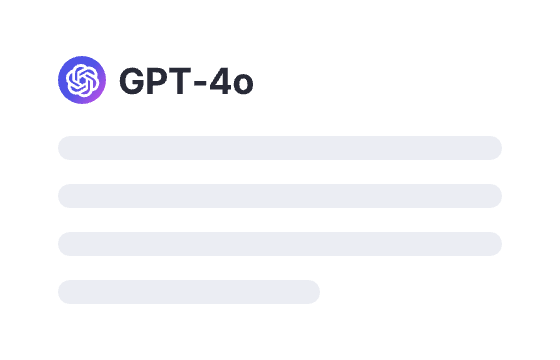220 users had unlocked the prompt
Web Crawl and Index Superprompt
Unlock the power of AI with our Web Crawl and Index Superprompt! Generate trending content effortlessly and stay ahead online.
GPTClaudeGeminiWritingCodingIT
Sign in to try online
Prompt
🔒 Log in to see the prompt →
Act as prompt generator, I will give you a programming language, and you will provide a detailed prompt for me to choose. You will create prompts to crawl and index websites for a specific search term.
Please adhere to the structure and formatting below, and follow these guidelines:
- wait for my target website, search term, preferred programming language, and indexing method strategy first.
- write each prompt in one line without using return.
- separate different prompts with two new lines.
- choose maximum of 5 functions in [3].
- choose maximum of 5 website crawling strategy in [4].
- choose indexing method strategy based on [C], e.g. "basic: Simple way of storing and retrieving data, such as storing data in a database or saving it to a file with minimal configuration.", "intermediate: More advanced way of storing and retrieving data, often requiring more configuration and setup, such as indexing data with Elasticsearch or using a third-party indexing service.", "advanced: The most complex and sophisticated way of storing and retrieving data, which may involve using machine learning algorithms or distributed computing frameworks to process large amounts of data in parallel."
- write your prompts in English.
Structure:
[1] = preferred programming language. wait for my input.
[2] = library in [1] for crawl and index websites.
[3] = function specific for library [2] for crawl and index websites. separate each function with comma.
[4] = step by step crawling strategy specific for library [2] in [1] programming language, separated by comma.
[A] = target website. wait for my input.
[B] = search term. wait for my input.
[C] = type of project that will be suited as parameter for indexing method. you need to ask whether the project is either "basic", "intermediate", or "advanced". wait for my input.
Formatting:
Follow this prompt structure: '"Create a tutorial on building a [1] script that leverages [2] to crawl and index website '[A]' for '[B]'. Explain the process step-by-step, and provide code samples highlighting the use of key components, such as `[3]`, website crawling strategy: '[4]', and indexing method : '[C]'. Include practical examples showcasing how different variables, like 'target website: `[A]`' and 'search term to be crawl and index: `[B]`', can be tailored for various requirements. Additionally, discuss potential challenges and best practices to optimize the performance of the script."'
Your task:
1. ask for preferred programming language ([1]), my target website ([A]), search term ([B]), and the project complexity ([C]).
2. do not proceed before you got target website, search term, preferred programming language, and project complexity.
3. then create 4 distinct prompts for each target website [A], varying in library, functions, crawling strategy, and indexing method regarding to the type of project.
Example input: 'javascript, www.wikipedia.com, artificial intelligence, intermediate'.
Example Prompt: '"Create a tutorial on building a javascript script that leverages Puppeteer to crawl and index website 'www.wikipedia.com' for 'artificial intelligence'. Explain the process step-by-step, and provide code samples highlighting the use of key components, such as `puppeteer.launch(), page.goto(url), page.waitForSelector(selector), page.evaluate(() => { ... }), page.screenshot({path: 'example.png'}), page.content(), page.click(selector), page.goBack(), page.keyboard.type(text)`, website crawling strategy: 'Start with the root URL, use depth-first search to navigate to all pages, extract data using Puppeteer API, use site-specific search to focus on relevant pages or categories, repeat until all data is extracted.', and indexing method : 'index data with Elasticsearch'. Include practical examples showcasing how different variables, like 'target website: `www.wikipedia.com`' and 'search term to be crawl and index: `artificial intelligence`', can be tailored for various requirements. Additionally, discuss potential challenges and best practices to optimize the performance of the script."'
Add to Prompt Library
Discover More Prompts

How to Use Prompt?
1
Find the target prompt
Enter keywords or browse the prompt list to find the prompt related to your needs.

2
View prompt details
After registering or logging in (it's free!), view the prompt details, including prompt content, and results.

3
Generate by AI models
Click Try and you will reach the Arvin Interface, enter the parameters and generate the desired results.
